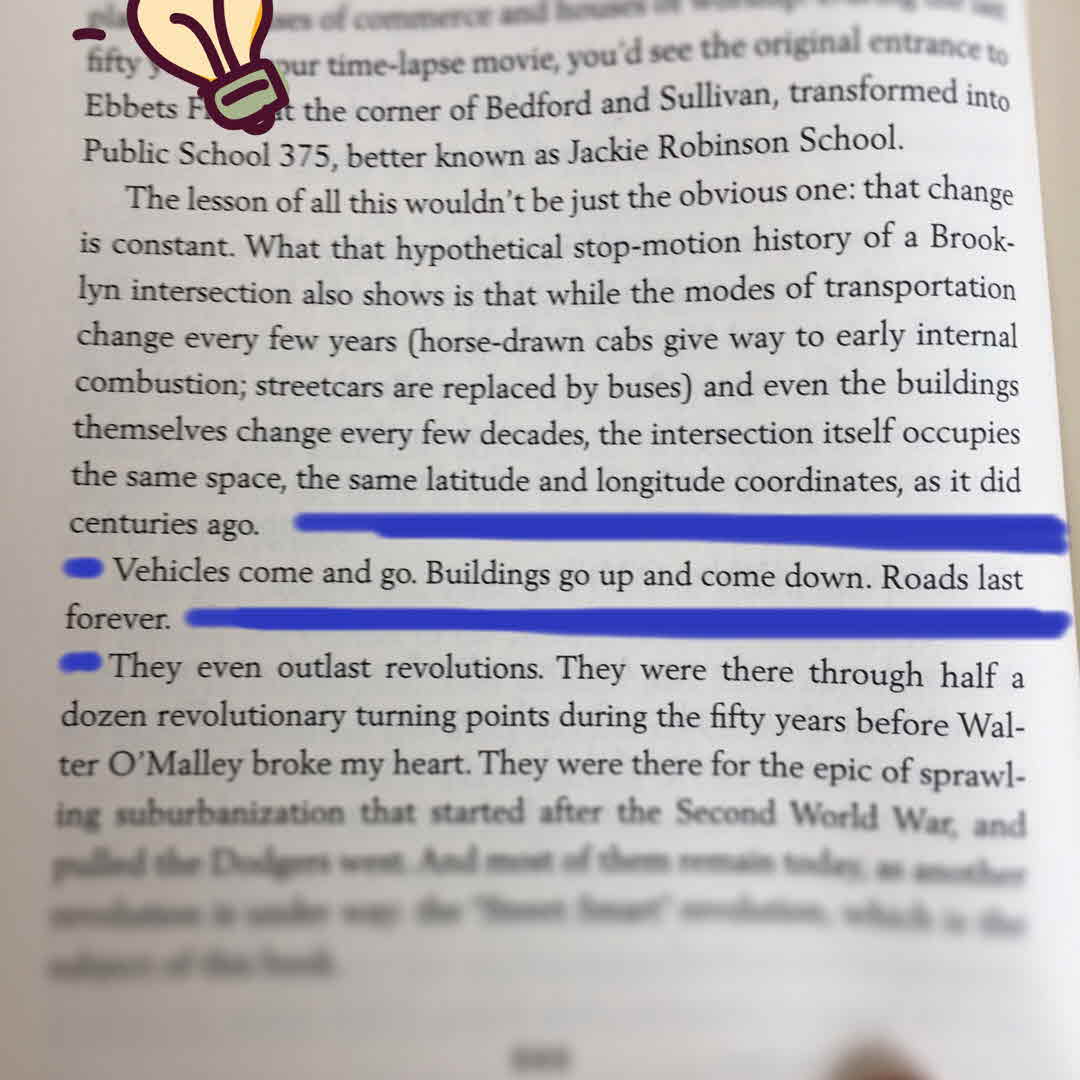
“Roads last forever.”
This. idea.
Really excited to see where this book goes.
#urban #transportation #nonfiction #newyork #roads #cars #urbanplanning #nonfiction

“Roads last forever.”
This. idea.
Really excited to see where this book goes.
#urban #transportation #nonfiction #newyork #roads #cars #urbanplanning #nonfiction
The total average cost of driving, including depreciation, maintenance, and insurance, runs about 61 cents a mile, and since the average automobile used for commuting to work contains only 1.1 people, every commute costs a little more than 55 cents per passenger mile. This means that, if you‘re an automobile commuter traveling twenty-five miles each way to work, you‘re spending around $30 a day for the privilege.... to park.
This is a great read, it tells the story about how we have been steered towards cars and away from effective mass transit. Not to mention how the tide is turning.